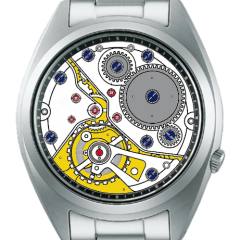Balance cock stud screw
-
Recently Browsing
- No registered users viewing this page.
-
Topics
-
Posts
-
I actually saw this Boynton tool on ebay just a few days ago but had no idea what it was for. Thank you - I'll hunt for it again. Well before I shellacked the stones, the watch did tick long enough for them to become dislodged and long enough that the impulse jewel fell out. So I want to get back to that point first.
-
I got into watch repair a few years ago but it kind of fell by the wayside. However my wife's Omega Seamaster strap could do with having some of the pins and tubes replaced to remove stretch from the bracelet. I have found some for sale here- https://thewatchlink.co.uk/products/pin-and-tube-set-for-omega-seamaster-ladies-6501-827-watch-bracelet However will I be able to fix these myself with the basic watch movement tools I have lying around? The tubes must only be a few mm across and look fiddly to handle. Should I just take this to my local watch person or attempt it myself?
-
By nickelsilver · Posted
It seems the 101 is still the smallest- and yes, I've worked on a number of them, and their brother the 104 which is 2mm longer and 1mm wider. They are very nice movements, but get used in jewelry where they are squeezed in with tiny dials, not really practical for telling time. The Piaget 9P was the thinnest movement for some time, and is actually a really good runner, and much more legible at 20mm and round. The 101 is 14mm x 4.8mm rectangular. There's been a lot of new efforts on the "thinnest" front in recent years. I personally hate them all (not the classic Piaget stuff), but impressive work. Surprisingly Bulgari has the record now. I've never seen a Citizen 4520, man, that's small! -
By Neverenoughwatches · Posted
Anyone have this error come up ? It's happening almost constantly, every minute or so Been doing it for about 4 days now.
-






Recommended Posts
Join the conversation
You can post now and register later. If you have an account, sign in now to post with your account.
Note: Your post will require moderator approval before it will be visible.